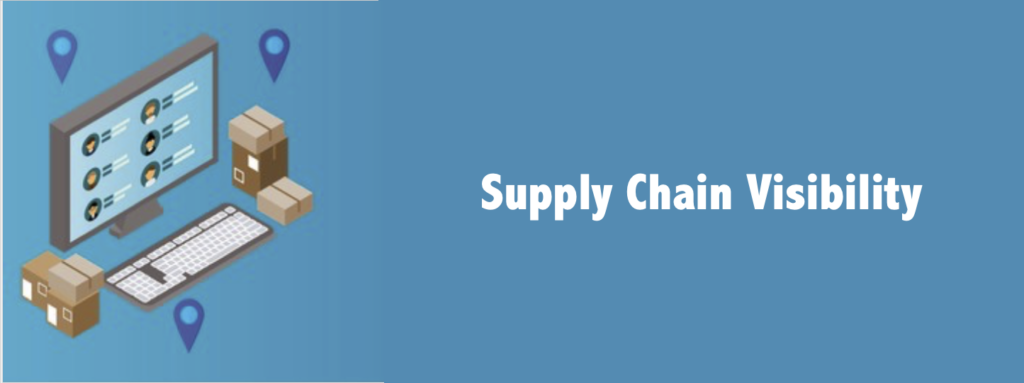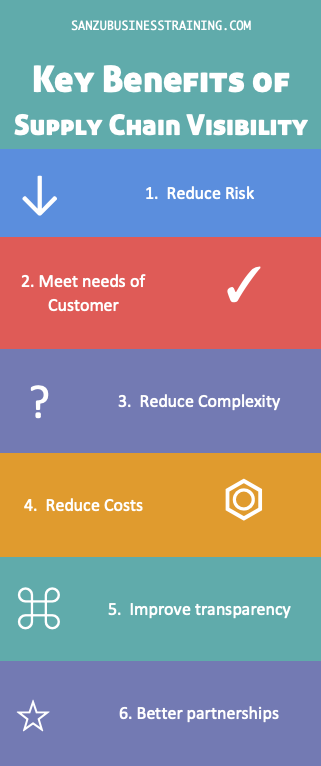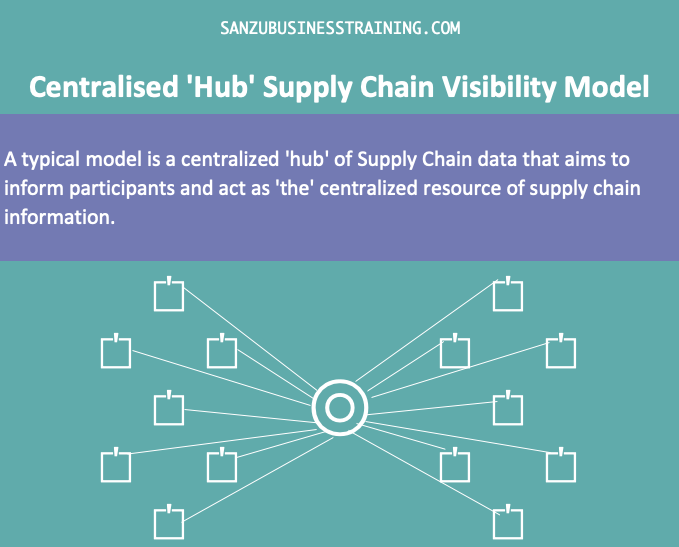
Supply chain visibility describes the process of identifying & understanding what’s going on across your supply chain (up and downstream), in real-time, across interconnected processes and stakeholders.
It can be a complex and challenging process to succeed in but can offer numerous benefits when configured appropriately.
In this article, we’ll be looking at Supply Chain visibility; we’ll aim to cover;
- What is Supply Chain visibility
- Why do we need Supply Chain Visibility?
- How does Supply Chain visibility help?
- What are the benefits of Supply Chain visibility
- How does Supply Chain visibility work best?
- Supply Chain Visibility requirements
- Supply Chain Visibility software
- How do you bridge the technology gaps?
- What are common issues with Supply Chain visibility
What is Supply Chain Visibility
As we described in our introduction, Supply Chain visibility is the capability to view all activities within the supply chain both up and downstream, in real-time, across all (or key) stakeholders.
The key goal of supply chain visibility is to develop and improve the robustness of the supply chain through providing data-driven insights to stakeholders (from customers to suppliers), which can help improve decision-making and problem-solving.
Supply chains can be complex; when things go wrong, supply chain visibility provides a mechanism to identify, immediately, the issue to participants within the process, thereby supporting an early resolution.
Why do we need Supply Chain Visibility?
Supply Chain visibility helps organizations avoid disruptions through driving improved awareness of:
- Dependencies
- The end-to-end chain of organizations within the supply chain
- Demand
- Stock levels
- Location
At its heart, it helps us make decisions enabling us to switch on or off key elements within the supplier/customer ecosystem, helping us better react to dynamic (and often challenging) conditions.
A key requirement is often the tracking of raw materials and inventory from OEM’s/Distributors, through the procuring organization, onto manufacturing facilities, and then out the door to its customers.
Supply Chain visibility helps track movement at each step through the various facilities within partner organizations through to receipt by its customers.
It does so at a granular level, often tracking batch numbers / serial numbers providing a view that helps achieve a deep understanding of compliance.
How does Supply Chain visibility help?
As we know, there is a range of supply chain processes. So how does visibility help practically?
The answer is by providing a view of the entire process, for example:
- Initial demand
- Inventory levels/capacity within the supplier
- Purchase Order within buyers system
- Receipt of an order by the supplier
- Fulfillment process within the supplier (i.e., raw materials, manufacturing status, bought-out requirements)
- Distribution & shipping process (including import/export status)
- Shipping information
While all the while providing:
- Detailed updates of the delivery date from the supplier
- Forecast delivery dates to buying organizations customer
Tracking such a detailed integrated stack of processes can be challenging. To get the best benefits, data is required in real-time.
What are the benefits of Supply Chain visibility?
 |
Whilst targets vary from one industry to another, common benefits include:
* Better equipped to meet the needs of the customer |
How does Supply Chain visibility work best?
A typical model is a centralized ‘hub’ of Supply Chain data that aims to inform participants and act as ‘the’ centralized resource of supply chain information.

Organizations that have best in class supply chain visibility have several characteristics:
- The process integrates seamlessly with existing systems
- Data is real-time
- Key areas that support the goals of the participants are tracked; this could include
- Inventory
- Orders
- Work in progress; through to
- Batch Numbers
- Locations
- Compliancy data
- Data is usually presented in a hierarchical state, allowing both macro and micro views of the connected enterprise.
- Participants often include:
- End Customer
- Sales Channel
- Buying Channel
- Distribution/shipping Channel
- Distributor
- Manufacturer
- Critical 3rd party suppliers
- Integration between participant systems is often achieved through a central hub that receives, processes, and presents data.
- Supply Chain visibility helps provide verification of order to fulfillment processes.
- Supports traceability requirements where manufacturers or selling organization need to track individual products
For such a system to be optimal, it requires stakeholder collaboration, this requires,
- Trust & Supportive partnering of all participants
- Recognition that sharing data is a critical success factor
- Accurate forecasting & planning is a key enabler.
Supply Chain Visibility requirements
Given the enormity of data within the supply chain, it’s perhaps unsurprising to see a range of different approaches to implementation.
The participating industry often drives these different approaches and key requirements. For example, the Aerospace industry may have specific requirements to track parts at item level requiring quality-related information by part. General manufacturing may require more macro-level data such as raw material visibility within shipping processes.
It’s imperative that the participants configure the solution based on their requirements rather than choosing a generic approach that might miss key needs.
Criteria often include the level of detail around what is tracked, for example:
- Summary level – status & location of materials
- Component level – status and location of key components
- Batch Level – key emphasis on the visibility of quality requirements (i.e., traceability) – e.g., Aerospace and pharmaceuticals, which may require
- Batch numbers
- Serial numbers
- OEM certification
- Raw Material compliance certification
- Certifications from 3rd party sub-contractors.
Supply Chain Visibility software
As we described earlier, the critical enabler for supply chain visibility is software. End to end visibility of a supply chain is not a paper exercise.
The software will usually have several key characteristics.
- Be cloud-based
- Offer simple integration to stakeholder systems (often through Electronic Data interchange)
- Offer robust levels of security and data protection.
- Focus on consolidating large sets of complex data into easy to understand reports and dashboards
- Have a configurable rules-based engine
- Incorporate alerts and messaging designed to help mitigate risk and problem solve.
Given the complexity of the task, there are a number of specialist software providers, some examples include:
- https://www.fourkites.com
- https://www.sap.com
- https://www.project44.com
- https://www.ibm.com
- https://www.coenterprise.com/solutions/syncrofy/
How do you bridge the technology gaps?
Given that technology is typically an enabler and that many organizations are often put off implementing visibility due to concerns over cost and complexity, how should organizations look to bridge that technology gap?
1/ Define the goals – Have a clear goal in what you’re setting out to achieve through supply chain visibility; ensure your goal is measurable.
2/ Gap analysis – Clearly understand the gap between where you are now and your ideal situation
3/ Be clear and realistic about benefits that will be achieved
4/ Be sure to investigate various systems to ensure you ascertain which one closely complement your goals
5/ Be clear about costs/benefits and ROI
6/ Be clear to model the solution first (including partner organizations)
7/ Communicate early with stakeholders that you intend to participate
8/ Look to implement open architecture (non-proprietary) i.e. EDI, RFID,
9/ Don’t just look at your current supply chain but ensure you model the potential solution around likely future requirements to avoid being constrained.
What are common issues with Supply Chain Visibility?
Supply Chain Visibility can be a complex, demanding process. (https://www.supplychaindive.com‘s research shows that only 6% of organizations have achieved it). So what goes wrong? Common issues include:
- Goals may be unclear and/or unrealistic.
- Visibility can mean different things to different participants
- Implementation/integration of supporting systems can be challenging
- Insurmountable challenges with data may exist.
- Poor budgetary expectations around implementation
- Lack of supporting technology in some suppliers
- Poor quality data hampers results
- Companies fail to see projects as long term and
- Fail to sustain
- Have unreal expectations around ROI
Summary
Having end-to-end visibility within your supply chain can offer many far-reaching benefits, not only to your organization but to participants also.
Facilitated by integrated data, rules-based systems can help highlight emerging issues, reduce risk, and help process day-to-day transactions more efficiently.
However, while there are clear advantages to having back and forward visibility within the supply chain, it will remain elusive for many organizations due to its complexity and the demand it places on participants.
Have you had success in implementing Supply Chain Visibility? Have you tips that you’d like to share? Perhaps you’re a participating supplier? As ever, we’d welcome feedback; you can reach us on Twitter (@sanbustrain) or via the comments section below.
This article is part of our Supply Chain Guide.